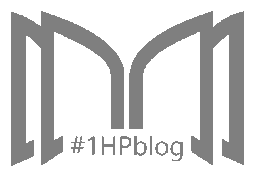Writing Hacks: Master the Use of Punctuations
Posted on Jan 11, 2024
Writers collect words and put them together to create one meaningful story, but even if you have a wide range of vocabulary to choose from, a sentence’s meaning immediately gets lost with a single misuse of a punctuation. Yes, you want to express yourself through writing, but if you are using the wrong punctuations, then what exactly is the point?
In the English language, there are fourteen punctuations all in all, and in this new series, we will be discussing the most commonly used ones in writing. These are the period (.), question mark (?), exclamation point (!), comma (,), semicolon (;), apostrophe (’), and quotation marks (“”).
During the early years of writing, punctuations are used mainly to indicate and mark pauses or other aspects of speech when a text is being read out aloud. However, over the years, punctuations are refined and developed, specifying grammatical relationships between parts of a sentence.
Three of these punctuation marks are used to end a sentence: the period (.), the question mark (?), and the exclamation point (!). Their uses are simple enough: they mark the end of a sentence, and they indicate the tone of a statement. The period (.) is used in a declarative sentence; the question mark (?) is used in an interrogative sentence; and the exclamation point (!) is used in an exclamatory sentence.
Another set of punctuation that a writer must be wary of is the comma (,) and the semicolon (;); both are used to mark a pause in a series. This is where it gets tricky and confusing, and most writers tend to go wrong when using them.
First off, the comma (,) is used to separate ideas or elements in a sentence. It is also used in numbers and in letter writing, after the salutation and the closing. However, there is also the existence of the Oxford comma to think of. The Oxford comma or the serial comma is placed between items in lists and before the final coordinating conjunction (and, or, nor) in a list of more than two elements.
The semicolon (;) is close to having a similar use, but it would be a wrong to use a semicolon in place of a comma in every scenario. The semicolon’s main function is to connect independent clauses. Simply put, it is used to connect two or more ideas in a sentence in which the ideas are given equal weight.
Punctuations can be a good source of headache for writers and editors, and apostrophes (’) and quotation marks (“”) are not to be underestimated as well. One wrong use can lead to a massive damage in your paper, so it is vital to know when or when not to use them.
An apostrophe is used to shorten a phrase through omission of letter or letters from a word. It is also used for the possessive form of a word, as well as in plural forms of lowercase letters.
Meanwhile, quotation marks come in pairs (“”) or a single form (‘’). A pair of quotation marks (“”) designates the beginning and the end of a passage or a quotation. It is also used in emphasizing an unusual meaning or a dubious status of a word. Moreover, single quotation marks (‘’) are mostly used to indicate a quote inside another quote.
Mastering the use of these punctuation marks will always be tricky. However, punctuations enhance readability of your text, and using them in the correct ways will help you express yourself clearer in your writings.
Hence, as a writer, editor, or wide reader, it is important to have guides with you that you can consult whenever you get confused, so look forward to our Punctuation Series where we will be discussing more details about each of the punctuations that are most commonly used and most often misused as well.
Sources:
About 1-Hour Proofreading
1-Hour Proofreading is a growing start-up offering fast and efficient editing services at a reasonable price with the assurance that the document is publication-ready the soonest you need it. Its team of highly competent professional editors is committed to helping those in need of quality editing services while facing tough deadlines.
Visit 1hourproofreading.com for more details.
Follow us:
Back to Grammary



